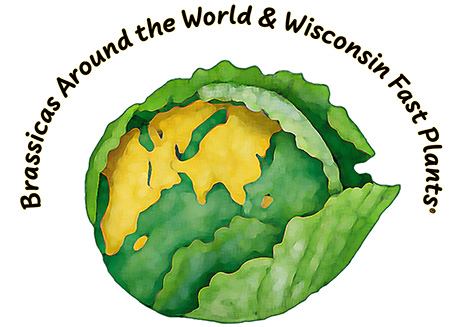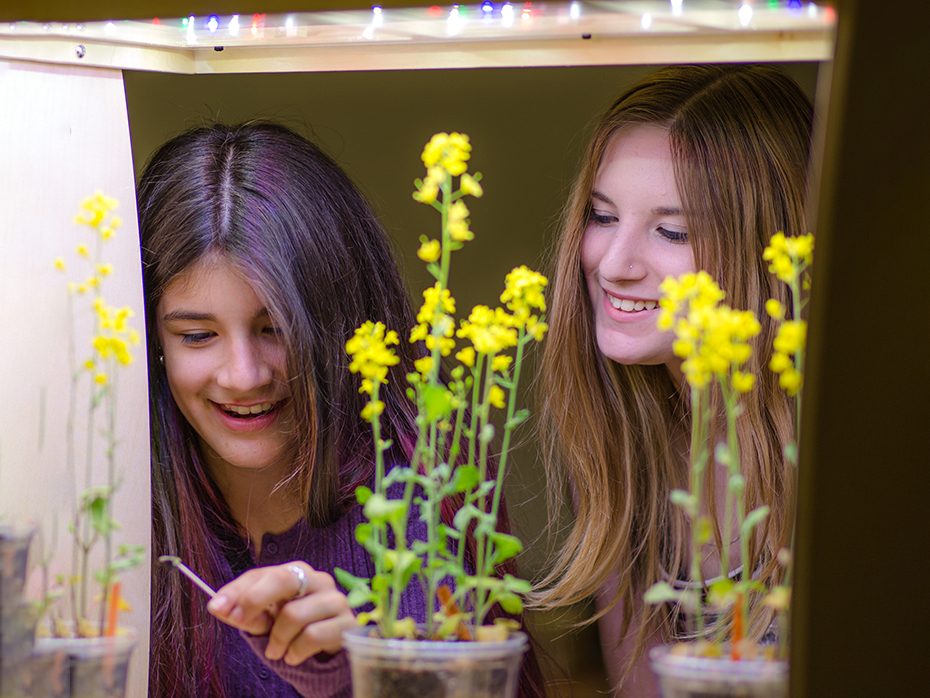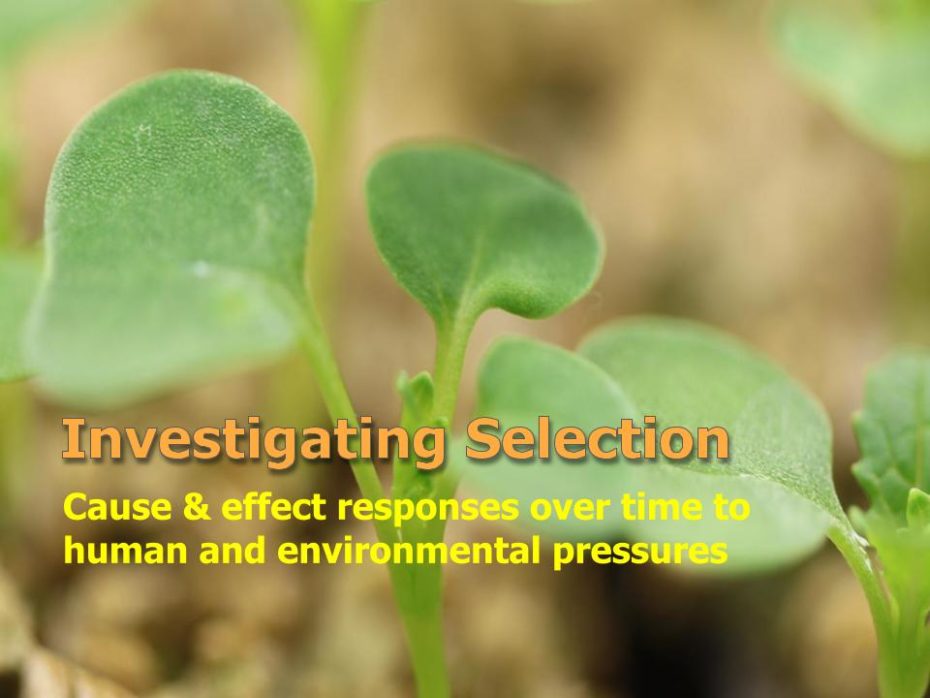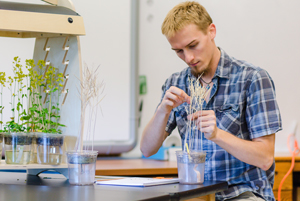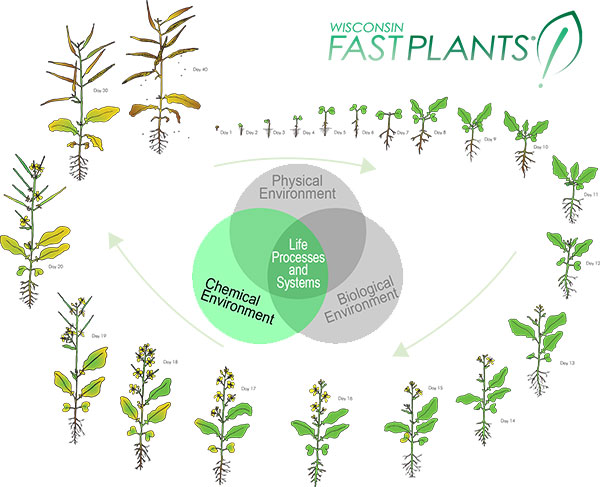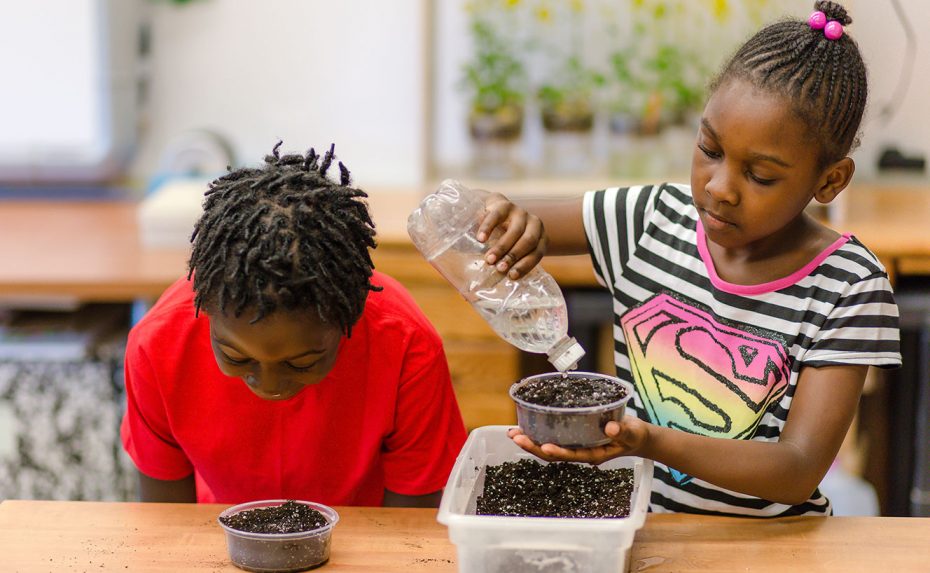Future Depends on Plant Systems careers In the ever-evolving landscape of agriculture and plant sciences, the need for hands-on experiences growing plants has never been more critical. Career Technical Education (CTE) courses in the Plant Systems Pathway are foundational for future professionals in a wide variety of plant science fields, and one valuable addition that stands out is the incorporation …
Fast Plants Conferences 2023 NABT CAST ACTE Booth Resources
It’s the season of professional development conferences for teachers, educators, and our Fast Plants Team! Come visit our booths in the exhibit halls, they’re always packed with living Fast Plants, recommended resources, and good conversation. Jackson is attending NABT in Baltimore; Hedi and Dan are attending CAST in Houston and ACTE in Phoenix! This blog post summarizes what you’ll find …
Digital Library of Fast Plants Resources
We are proud to announce a revision and upgrade to our Fast Plants Digital Library! In our more than 35 years serving teachers and researchers, the Wisconsin Fast Plants Program has always been dedicated to creating free, open source resources for using Fast Plants effectively as a model organism. The recently completed upgrade to our library allows us to make …
Dihybrid Inheritance Study Using Wisconsin Fast Plants – Open Source Educator Resources
Blog Post Sections Announcing Dihybrid Inheritance Study Teaching Tool Study and Resource Overview Dihybrid Inheritance versus Monohybrid Inheritance Patterns: Which to Choose? Identifying Traits Rosette-Dwarf and Anthocyaninless (Non-Purple) Study Timeline Learn More and Access Resources Announcing Dihybrid Inheritance Study Teaching Tool The Wisconsin Fast Plants team is proud to announce the release of a set of resources to support teaching …
Investigating Brassicas Around the World with Fast Plants – Open Source Lesson
Blog Post Sections Announcing Brassicas Around the World Lesson Hands-On Fast Plants Experiment Models Brassica Selection Around the World This Investigation is Ideal for… Connecting Science and Culture Relevance of Fast Plants and Brassicas Around the World Announcing Brassicas Around the World Lesson The Wisconsin Fast Plants team is proud to announce a revision and content overhaul to one of …
Seed Harvest – Identifying Mature Seeds
Producing Fast Plants seed for investigations that need offspring generations Seed harvest is an essential step in any Fast Plants experimental design that involves gathering evidence from offspring plants that students produce themselves. For example, you may have students conduct an inheritance investigation in which they inter-mate Fast Plants from an F1 generation to produce and observe the F2 offspring. …
New DIY Grow Lights for Fast Plants
Superior Grow Lights: Easy build your own What grow lights do I need for growing Fast Plants? That’s an important question. However, it also may be the start of a missed learning opportunity, if we’re not mindful. Consider for comparison your reaction when a student asks: “What do I need to know for the test?” Likely, your response includes hoping this …
New! Polycots Fast Plants Seed Line: Engaging & versatile for selection experiments
Polycot seedlings are easy to distinguish just a few days after germination! Our new Polycots seed line of Fast Plants features a trait that students can easily see at the seedling stage. In addition, we’ve developed a procedure for producing parental (Generation 1) and offspring (Generation 2) Polycot seed stocks, so it is not necessary for students to produce their own …
Preservice teachers on the frontline in ending plant blindness
Preservice teacher learners become effective teachers of science by developing strong content and content pedagogy knowledge that support all learners. In other words, the learning arc for preservice teacher learners is multilayered and jam-packed! So, it’s a tall order to hope that future teachers of science–elementary and secondary–are the solution to our national epidemic of plant blindness. “Plant blindness” may …
Hands-on learning with Fast Plants grows minds-on learning
While occupied by hands-on Fast Plants tending tasks in my role as co-director of the Wisconsin Fast Plants Program, I often listen to podcasts. Spoiler alert: I love podcasts about plants! No surprise, one of my favorites is Matt Candeias’ podcast, In Defense of Plants. Beyond my fascination with the wide array of topics Matt dives into in his podcasts, I appreciate …
Growing plants inspires a botanical path
Growing plants inspires everything from a solid appreciation for plants to a lifelong passion. Equally important to inspiration, growing plants can be key to developing citizens literate about our dependence on plants for life. With this in mind, we share here Daniel Murphy’s firsthand account of his experiences growing plants and becoming–in his words–“a bona fide plant nerd.” Daniel publishes a weekly blog titled, Awkward Botany, sharing his …
My first experience teaching with Fast Plants
Classroom teacher, Julie LaConte, tells about her first experience teaching with Fast Plants in this guest post. Thank you, Julie, for sharing your insights and experiences! Fall 2019 was my first experience teaching with Fast Plants, and plants are one of my least favorite topics to teach. After 18 years as an upper elementary and middle school science teacher, I have had my fair share …
Investigations with Wisconsin Fast Plants lead to powerful learning
Teaching and Learning with Fast Plants Investigations We know it is important to “help students make sense of the natural world by designing and carrying out authentic, student driven investigations (Wingert & Bell, 2015).” Compared to other living organisms, Wisconsin Fast Plants are easy to manage and very responsive to factors in their environment. In addition, many easy-to-observe Fast Plant phenotypes …
Three mistakes to avoid for growing healthy Fast Plants
Maybe you’ve grown Wisconsin Fast Plants before, or perhaps you’re just getting started–either way, we all want to grow strong, healthy Fast Plants. Nobody wants tall, spindly plants that need support or sickly plants that barely flower. No problem! Read on, and we’ll explain three common pitfalls to avoid when setting up growing conditions that support healthy Fast Plant growth. 1. Not …
Guest Blog: Construction of a Universal Reservoir Bottle Growing System
Wisconsin Fast Plants presents this guest blog as a contribution from a member of our sister program, Bottle Biology. Bottle Biology projects encourage creative ways to grow plants, such as the bottle growing system, to promote science as a tool everyone can use to explore the world. This guest blog is provided by Bottle Biologist Joel Cryer. Thanks Joel! Construction …
Chemical Environment: Growing Healthy Fast Plants
Growing healthy Fast Plants is easy if you understand how the environment can affect growth and development. Three broad categories of environmental factors influence how an individual plant matures through its life cycle: 1) the physical environment, 2) the chemical environment, 3) the biological environment. This post is part of a series explaining how key chemical environmental factors can impact plants, Wisconsin Fast Plants in particular. Our website describes …
Biological Environment: Growing Healthy Fast Plants
Environment plays a key role in how your Fast Plants grow and develop through their life cycle. Classifying environmental factors into three broad groups can be useful for studying their effects: 1) the physical environment, 2) the chemical environment, 3) the biological environment. This post is part of a series that explains how key environmental factors can impact plants. We focus here on biological factors and Wisconsin Fast Plants. Our website …
Physical Environment: Growing Healthy Fast Plants
Growing healthy Fast Plants is easy if you understand how the environment can affect growth and development. Three broad categories of environmental factors influence how an individual plant matures through its life cycle: 1) the physical environment, 2) the chemical environment, 3) the biological environment. This post is part of a series explaining how key environmental factors–physical, chemical, and biological–can impact plants, Wisconsin Fast Plants in particular. Our …
Can bee sticks sting?
Questioning whether or not dead bees including if bee sticks can sting comes up fairly often, and some folks also raise concerns about potential allergies. Here’s how UW-Madison’s entomologist, Dan Young, explained to us about the potential of getting a bee sting from a dead bee: I get this question once in a while, and the answer is clearly, NO. Dead …
When to plant Fast Plants?
Lesson planning with activities and experiments that involve a living, growing organism takes practice. It is important to consider the timing of when to plant Fast Plants seeds for optimal observation of the growing plants. Thankfully, when grown in standard classroom temperatures, Fast Plants stick pretty close to their predicted growth schedule. Frequently, we’re asked what day of the week …





